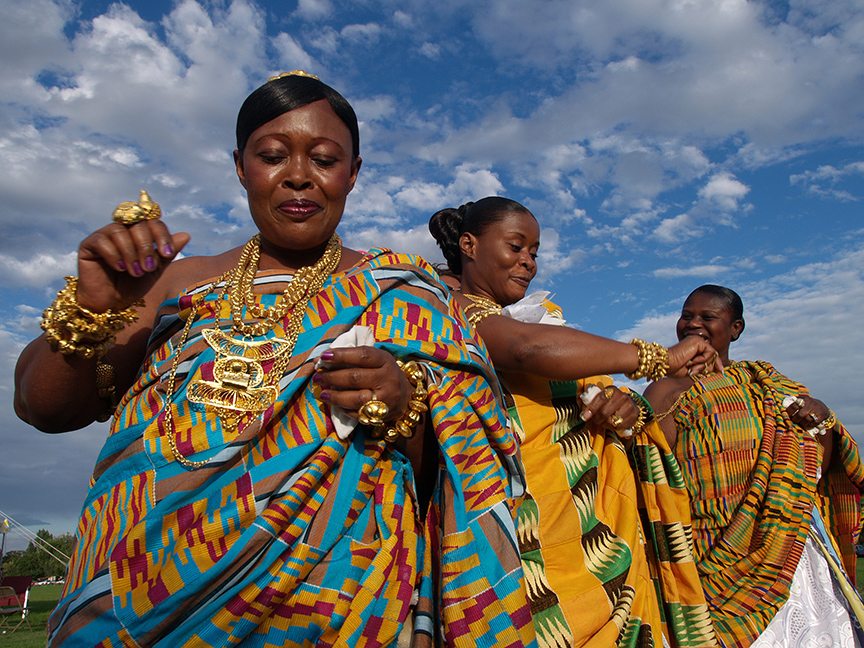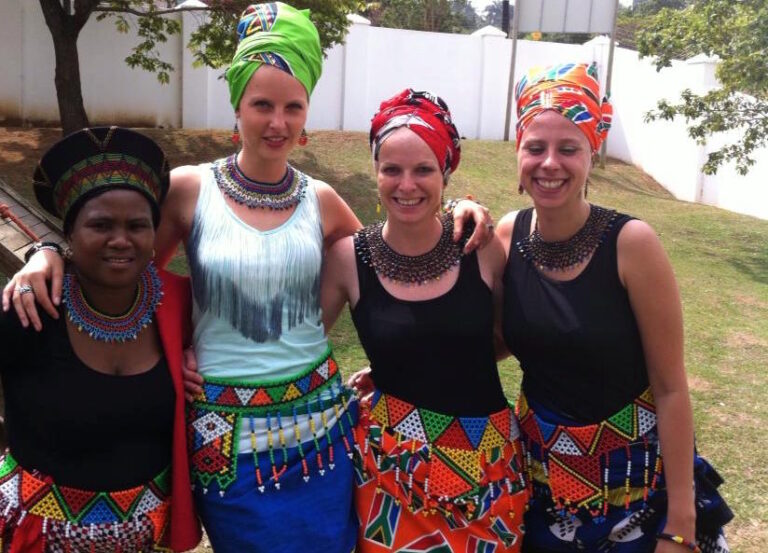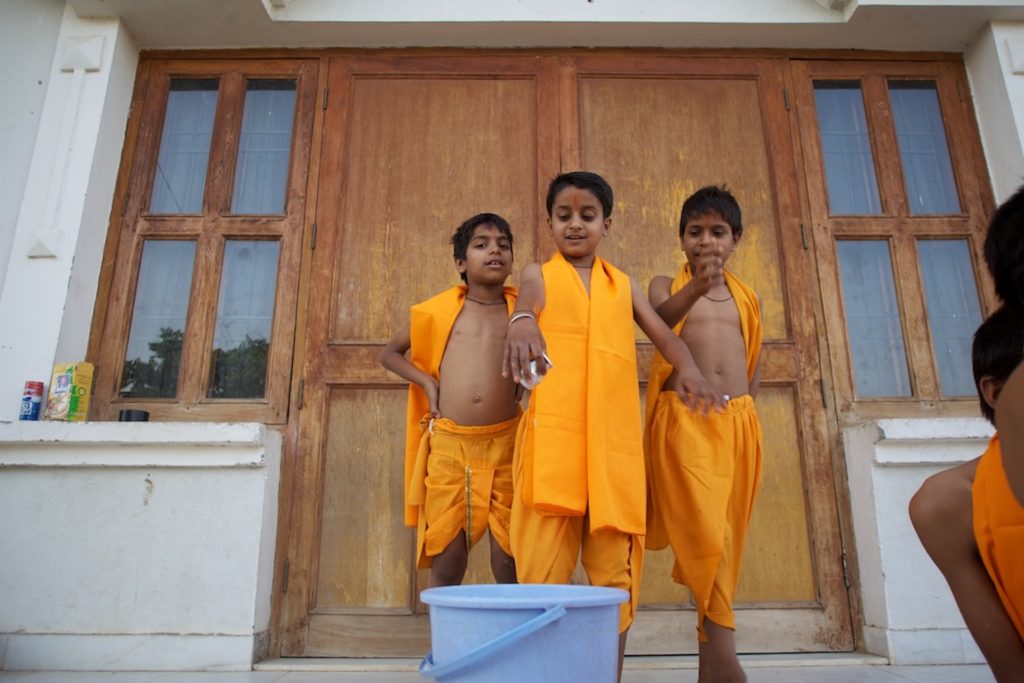Traditional clothing around the world. Traditional clothing is an important part of any country’s cultural identity.
It is steeped in history and often holds significant symbolic value for members of a society.
When travelling to a new country, learning about the traditional clothing can bring you a lot of interesting insight to the history and values of that country.
Always remember to respect cultural attributes and any religious meanings if you are wearing an items from another culture. Read more here about ‘When is it OK to wear an item from another culture, and when is it appropriation?’
TRADITIONAL CLOTHING IN GHANA

Ghanaian clothing is known for its bright, cheerful colours and patterns. One of the main clothing crafts in Ghana is weaving, particularly weaving cotton and raffia fibres. Ghanaians weave Gonja cloth and kente cloth, which make up the national clothing of Ghana.
With the influx of cheap, imported clothing, traditional Ghanaian clothing is facing serious competition. Ghanaian citizens are actively pursuing attempts to promote wearing traditional Ghanaian clothing with initiatives such as employers encouraging workers to wear traditional African outfits on Fridays, calling it “thank Ghana it’s Friday”.
One of the most recognisable traditional Ghanaian clothing items is the Ghanaian smock, made of Gonja cloth and typically worn in Northern Ghana. The Gonja cloth is a thick, striped cotton fabric which is picked, dyed, and woven by hand. The garment is similar to a shirt and is worn mostly by men. It often features embroidery on the front and is worn with a small cap or a red fez hat.
Another important garment is kente cloth, which is bright, colourful fabric featuring symbolic patterns. The kente cloth is generally worn on special occasions and has played a significant role in Ghanaian culture. It was originally worn only by royalty but has become a staple throughout Ghanaian culture. It’s worn by both men and women, but men wear it in a way similar to a Greek toga while women wear two, one as a wrap-around skirt and the other as a shawl. The pattern on kente cloth is particularly important.
There are over 300 different patterns, each with its own name, background, and symbolic meaning. Not only do patterns have meaning, individual colours do as well; for example, pink symbolises calmness and tenderness while gold represents wealth and royalty.
TRADITIONAL CLOTHING IN SOUTH AFRICA

South Africa is a beautifully diverse country, and different cultures around South Africa have their own unique clothing traditions. For example, in the Xhosa culture, clothing is influenced by a person’s social standing. Women’s clothing in particular represent different stages of life. Major clothing items include printed or embroidered skirt or aprons. Elaborate beaded jewellery is also common, as are headscarves, idhiya’s, for married women. For Xhosa men, animal skins are an important part of clothing.
As with Xhosa culture, clothing represents different stages of life for Zulu women. This is especially pertinent for marital status, as different clothing is worn by single, engaged, and married women.
Another significant garment in Zulu culture are izicolo hats, made of grass and cotton and worn by married women. As with Xhosa men, it is traditional for Zulu men to wear animal skins. Interestingly, since leopards are revered by the Zulu, only royalty are allowed to wear leopard skin. There is also a martial element to Zulu men’s clothing, as headbands are only worn by married men.
While these are descriptions of only a few of the many unique cultures and traditional types of dress in South Africa, they are great examples of the meaning and significance of traditional clothing.
TRADITIONAL CLOTHING IN INDIA

As with South Africa, traditional Indian clothing varies throughout different regions of the country. However, there are several significant garments that are worn for special occasions in Indian culture.
Saris are one of the most well-known traditional Indian garments. They vary in size depending on intended use, but women drape them in various ways and add a blouse, called a ravika or choli, to finish the outfit. Saris are often brightly covered and are sometimes patterned.
A kurta is another widely recognised traditional Indian garment typically worn by men. It is a long, loose tunic-like shirt made of natural fibers perfect for the hot, humid Indian weather. Dhotis are the masculine version of saris, worn wrapped around the waist and legs and knotted at the waist.
The best way to learn more about a country’s traditional clothing is to travel there and see it for yourself! So take the chance to see it for yourself while volunteering abroad with Vocational Impact!



